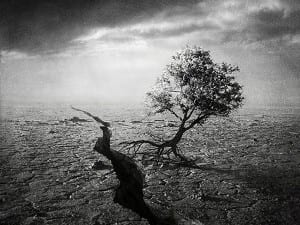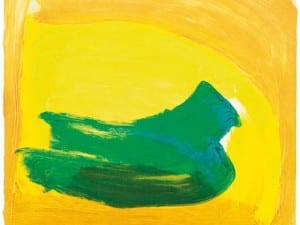Challenging the traditional notions of craft through design intervention, the new wave of DIY raises the bar for contemporary making.
Last year Aesthetica interviewed Wayne Hemingway, who shared his hopes for an increased creativity and entrepreneurialism through the coming recession. As the country settles from the upheaval of our new political dawn, it’s timely to assess the successes of this new embrace of Do-It-Yourself, and the established Jerwood Foundation is celebrating the maligned areas of craft and making in a spirit that embraces the creative possibilities of fluctuating mediums with Jerwood Contemporary Makers. Deliberately ambiguous, the term “makers” embraces the plethora of creative possibilities that abound with artistic handiwork and the opportunities presented by the recession that we discussed with Hemingway.
The Jerwood Charitable Foundation was established to celebrate and provide opportunities for emerging talent in all areas of the arts, including literature, theatre and dance, with Jerwood Visual Arts as its most renowned branch. The annual Jerwood Contemporary Painters curates the works of a selection of talented, lesser-known painters in a group show that rejects the competitive emphasis of awards such as the Turner Prize with each exhibitor awarded an equal share of the prize fund. Jerwood Contemporary Makers is now in its final year of a three-year programme, paving the way for a reassessment of the categorisation of makers in years to come.
This year’s exhibition brings together a range of makers practicing in textiles, ceramics, glass, metalwork, jewellery, found objects and woodwork, with 29 practitioners selected by leaders in the fields of metalwork, ceramics and textiles: Hans Stofer, Richard Slee and Freddie Robins respectively. A successful practising textile artist, with works exhibited in fine art, textiles and design contexts, Robins was excited at the prospect of collecting together such diverse works and challenging the boundaries commonly placed on processes. “There is no distinct line between making and art, but lines are put in place because they protect certain territories and give certain value. For me it’s immaterial, for me it’s about the integrity and quality of the work.”
It’s undeniable that, in spite of its popular explosion in the past 10 years, a certain elitism remains in the world of the fine art gallery, with painting, sculpture and conceptual art the hallowed grounds condescending their “design” and “craft” counterparts. An issue which is not least highlighted by the Jerwood Foundation’s dogmatic and consistent championing of painting while more craft-like works are collected together under the term of “makers”. Robin offers an explanation saying: “Traditionally making is seen as the crafts and the applied arts, but it’s not just craft people that make. I’d like to think that the term making is very open and it’s maybe a less fearsome notion. Because making can be a very simple thing and an extraordinary, complex thing and I like that it can cross across these boundaries. Children make things and I like the idea that adults are free and able and willing to make things too.”
Describing themselves jovially as “the super team of makers,” Robins worked with Stofer and Slee to bring together artists with each concentrating on their own speciality. The result is an organically eclectic range of works representative of creative practice today, all from “people whose work we thought represented the best of making and people who weren’t so well established.” Naturally the gallery setting affected the selection criteria but Robins acknowledges the limitless possibilities of who can be defined as a maker, with architecture, and site-specific art very much a part of the remit, despite its low profile for practical reasons in the exhibition. These exhibiting possibilities for architecture are imaginatively loopholed by David Rhys Jones’ image-pasted ceramics depicting his flâneur-esque observations around our cities. In-keeping with the rejection of fine art’s binaries, each work received uniformly demographic treatment, “every maker has a single plinth that their work goes on or in – that was our way of linking the work together in the space.”
Despite their disparate mediums, a number of common themes can be traced throughout the works, ranging from political and social critique, conceptual explorations, investigations into our surroundings and interrogations of mass media and 21st century hype. Dawn Youll and Lina Peterson’s work play with the boundaries of conceptualism in the more practical arenas of ceramics and jewellery. Youll’s bold abstract forms play with the perceptions that we forge from words and alert us to the inherently arbitrary nature of language, breaking and re-piecing elements of her visual observations to communicate a different message from the same materials. Peterson’s work employs a similar interrogation of the myriad possibilities of material and form, her at first-sight superficial pink brooch belying the effects of the material beneath on our perceptions outside of the brooch, each piece painted a uniform colour that takes on the qualities of the wood or silver or cardboard beneath. Tomoaki Suzuki’s sculptures focus on elements of adolescence, which are employed in the construction of identities in formative years. And so sportswear, designer labels, faux-nonchalant posturing and calculated facial expressions accumulate in non-judgemental observations of youth as Suzuki focuses on his materials rather than his subjects, striving to eschew traditional methods in the creation of new techniques for traditionally figurative works. Laura Ellen Bacon and Nora Fok’s works are both inherently connected to the organic – Bacon colonises the urban landscape with the subjects of child-like interrogations into nature, and Fok’s airy jewels almost frogspawn-like in their delicacy, hinting at a future ahead for the unborn within. Social critique comes to the fore in the work of Marloes ten Bhömer, as the restrictions of women’s shoes become works of art in their own right. Traditionally focused on the image rather than the practical, this aspect of women’s attire showcases the limits of women’s lib over the years. The shoes are deliberately disabling with the creation of a delicate totter to play up to preconceived notions of femininity. Bhömer’s shoes challenge these stereotypes with non-traditional techniques and materials to create both conceptual and wearable works. While Tony Hayward continues the found object traditions of fine art in the creation of grotesque figurines collected from flea markets around the globe, exploring the practice of deliberate decapitation with the marrying of disparate heads with bodies creating Frankenstein’s monsters of craft.
Hayward’s work raises questions of ownership and intellectual property that are particularly pertinent for the textile designers on show, with his own works taken from other makers in a mish-mash of sources and inspirations. As a textiles specialist, Robins is particularly sensitive to these issues of authorship, “obviously textiles can be an end product but more often than not someone else makes it to an end product,” and so the opportunity to bring the unsung heroes of fashion centre stage really appealed. She cites the example of Karen Nicol who, having worked for some of fashion’s biggest names including Chloé, Michiko Koshino, Betty Jackson and Julien Macdonald is well-established, but under the radar for most “she’s been working for a long time and she makes highly skilled work, but you’ll see it on the catwalk stamped under someone else’s name. She is starting to show more under her own name and this was an opportunity to show her so that people can see her work and put her name to it.”
The authority of the artist is clearly important to Robins, as is the continued emphasis among her students on working with the hands as opposed to the machine. “At one time people thought that technology would take over and everything would be done on computers, but with my students, I don’t see that. They want to do things with their hands. They want to be physically making not just virtually making, and involved with the material and the process,” with many artists citing the process as the central element of their work. However in spite of this reliance on the traditional, the exhibitors display virtuosity in their selection and use of materials. Joseph Harrington’s fusing of ice with glass creates a permanent substance from the transient beauty of ice; furthermore, the speed at which he works is significant as his materials rapidly disintegrate around him, reflecting the hectic nature of 21st century existence. Meanwhile, Robert Dawson has manipulated the conservative form of ceramic plates to play with the viewer’s perceptions in phasing the works in and out of focus, so his Willow Pattern with Uncertainty becomes an Op Art object while rejecting the futurist palette of his mid-century counterparts. Nicola Malkin’s absurd charm bracelets make the viewer almost Lilliputian, while blowing up the personal connotations of such trinkets onto a far more public scale, and highlighting the constant evolutions of the art with which we surround ourselves in the form of fashion.
It is doubtless that there has been an explosion in craftwork over the past few years, with “Stitch n Bitch” groups springing up around the UK and barely a week going by without the Guardian bringing one new project or another to nimble-fingered readers’ attention. For many in the echelons of fine art however, the craft counterpart still seems to lack the kudos of its more “difficult” bedfellows: “When things are super popular we start to be suspicious and think that they can’t have any value, I like the idea of dropping all titling, saying everything’s about making and everyone’s an artist.” Jerwood Contemporary Makers certainly brings the gallery potential to the fore, but its very popularity might be the asset that sees it lose funding and acknowledgement in the difficult times ahead. However, the works on show are truly innovative in their conglomeration of the radical and the traditional, reflecting not only the range of issues on the artists’ minds, but also their willingness not to be bound by labels and mediums and to embrace the flexibility of the term “maker” – and so perhaps Robins shouldn’t push for the use of the term “artist” just yet.
Jerwood Contemporary Makers was at the Jerwood Space, London from 17 June – 25 July 2010. www.jerwoodcharitablefoundation.org.
Ruby Beesley





